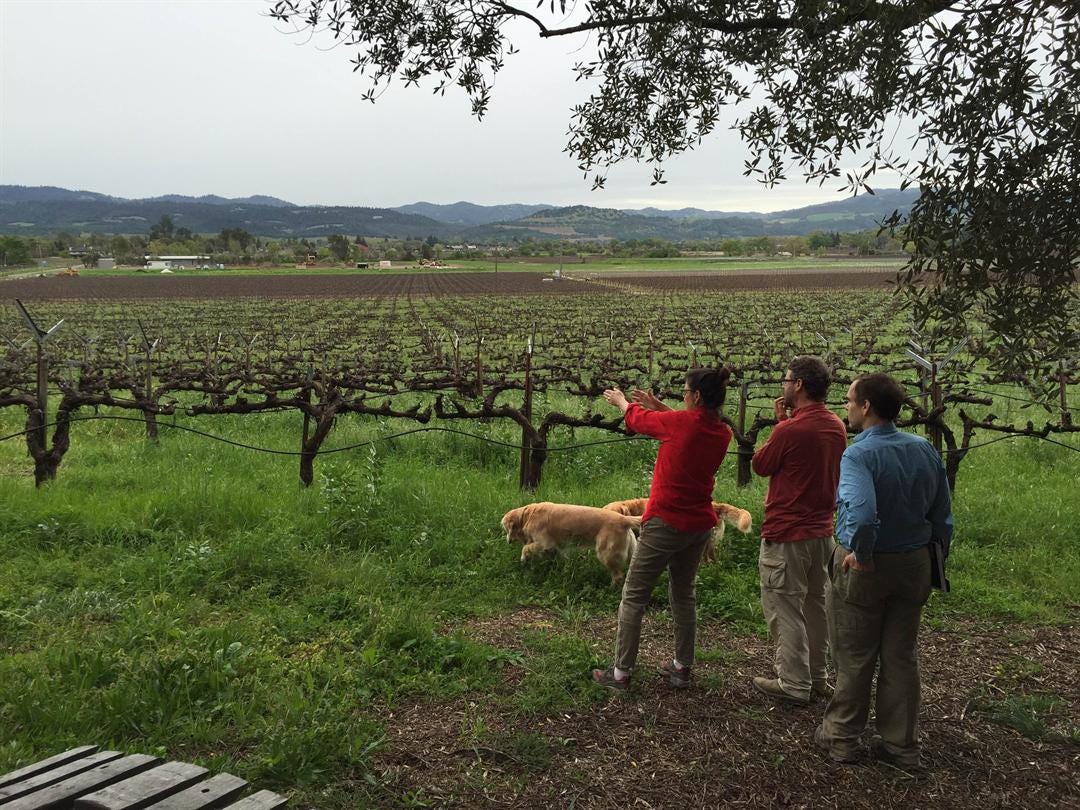Purdue Startup Uncorks Grape Technology for Winemakers
 VinSense
VinSense
Subscriber Benefit
As a subscriber you can listen to articles at work, in the car, or while you work out. Subscribe NowWhen sipping a glass of wine, it’s likely science isn’t top of mind, but that’s what determines the flavor profile of your pinot, says West Lafayette-based VinSense. The startup decodes the science behind grape growing to help vineyards produce the best possible fruit for the optimum glass of wine. Buoyed by a recent $225,000 grant from the National Science Foundation (NSF), the startup has its first paying customer and is uncorking its product for the market this spring.
Three Purdue University faculty created VinSense’s technology. One of its creators, Chief Technology Officer Dr. David Ebert, has a long history of learning about wine: he made wine for his fourth grade science fair project.
VinSense’s technology has two components; the first involves detailed data collection. The startup places inexpensive, commercially available sensors in the soil of vineyards—up to 20 per acre, each no deeper than 10 feet underground.
The sensors gather data on soil variation, moisture and other factors in very high resolution, creating 10-foot square soil maps. The second component translates the huge amount of information into a visual format on a tablet or laptop, helping vineyards make decisions about managing the crop while it’s still growing.
“The soils that grapes are grown on are much more complex [than other crops] and highly varied,” says Ebert. “Growers in the western U.S. are dealing with unprecedented growing conditions with droughts that haven’t occurred in hundreds of years—and back to back. They need more information. Grapes are a high-value crop, and the final product of wine makes wine grapes the highest-value crop per acre in the U.S.”
VinSense has deployed its system with multiple growers in California, helping them overcome additional challenges, such as heat spikes and unusually warm winters. Growers can compare today’s information to two weeks ago, months ago or previous growing seasons by incorporating historical data.
Dr. Christian Butzke, a Purdue professor of enology and a member of the VinSense founding team, says the technology aims to produce uniformity in the field, so all of the grapes—rather than just some—have the desired composition. Unlike other crops, Ebert says the main focus is less about volume and more about the grapes’ characteristics.
“[Growers] are trying to get a concentration of flavors in the grape, so you get the right balance of acids, sugars, phenolics, tannins and all of these other flavor components,” says Ebert. “If you produce just the biggest, juiciest grapes possible, you get a very watery, flabby glass of wine. So growers really focus on controlling the moisture and composition of their grapes.”
While VinSense has helped vineyards weather drought conditions in California, it’s often the opposite problem in Indiana. The startup is partnering with Huber’s Orchard, Winery & Vineyards in Clark County to further tweak its technology beginning this spring. Because it has 700 acres of orchards in addition to its vineyards, Huber’s is an ideal location to explore the technology’s use on other fruits.
“The more data and information we have, it gives us the tools to optimize the quality of the grape while it’s still hanging in the vineyard,” says Huber’s President Ted Huber. “The better quality of grape coming in from the vineyard, the better quality of wine we have when it comes time to bottle it. But we’re equally excited about [using the technology] in the orchards, because we’re not just making grape wines, we’re making peach wines and apple wines.”
VinSense says the recent NSF grant will help modify its technology for Midwest soil conditions, other fruits and nuts and gain more traction in the market as it launches next month—hopeful growers will be toasting victories in their vineyards.
Huber says the technology will uncover new data on more than just the grapes in its vineyard.
Ebert says VinSense’s tests in California are helping growers deal with unprecedented growing conditions.
Ebert says the technology will help growers determine their pruning strategy; part of the crop is dropped during the growing season to concentrate the grapes’ flavors.
